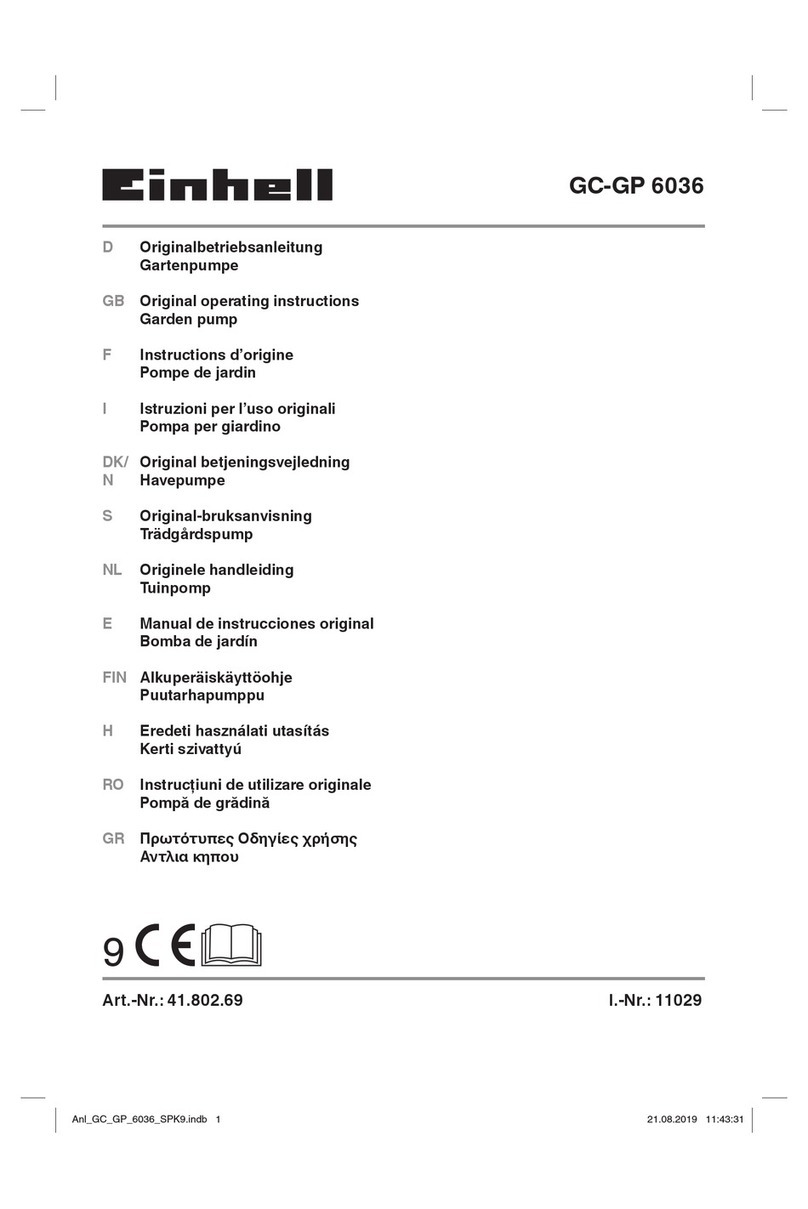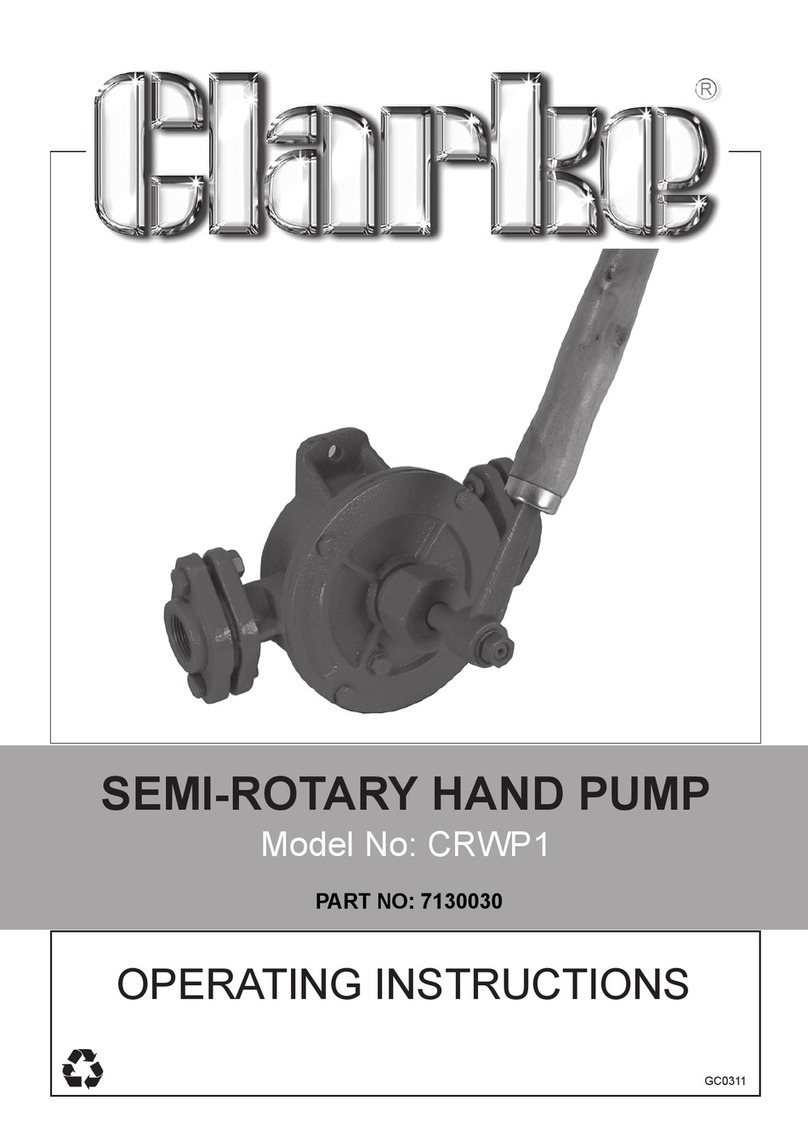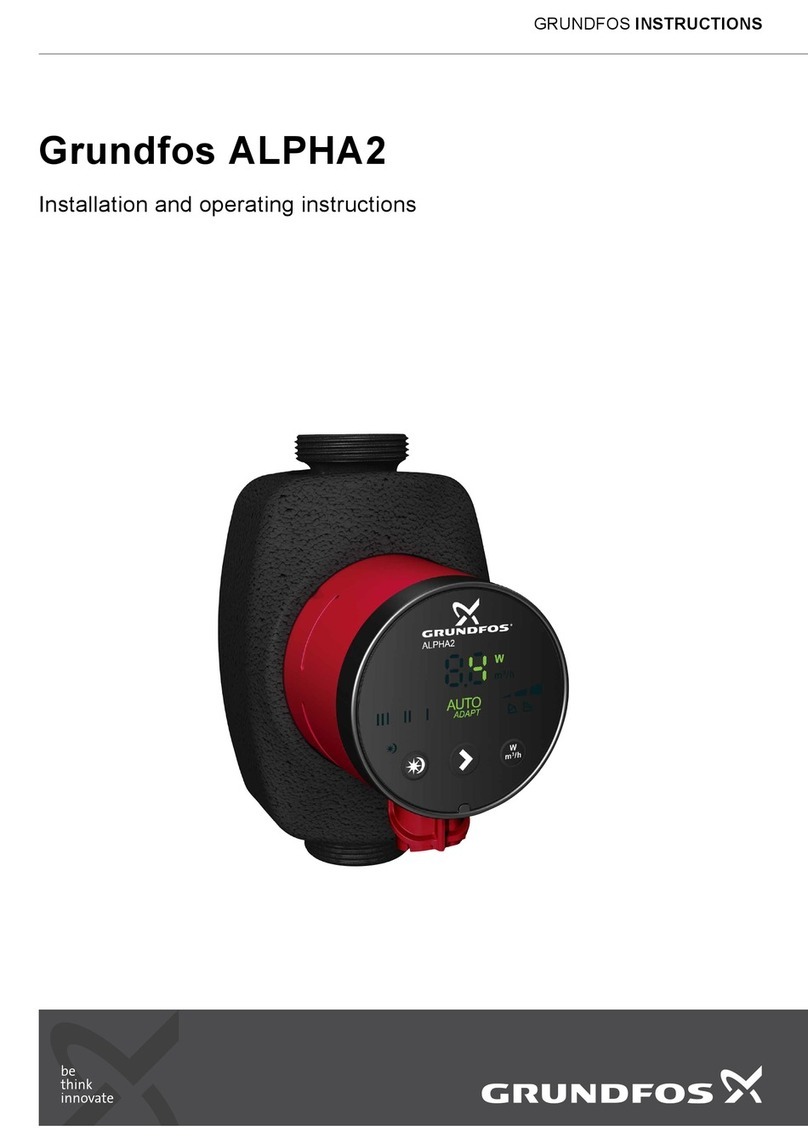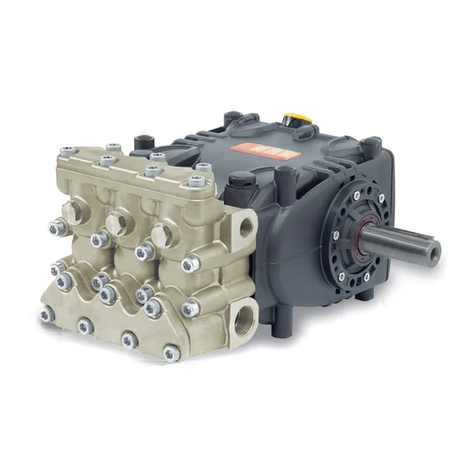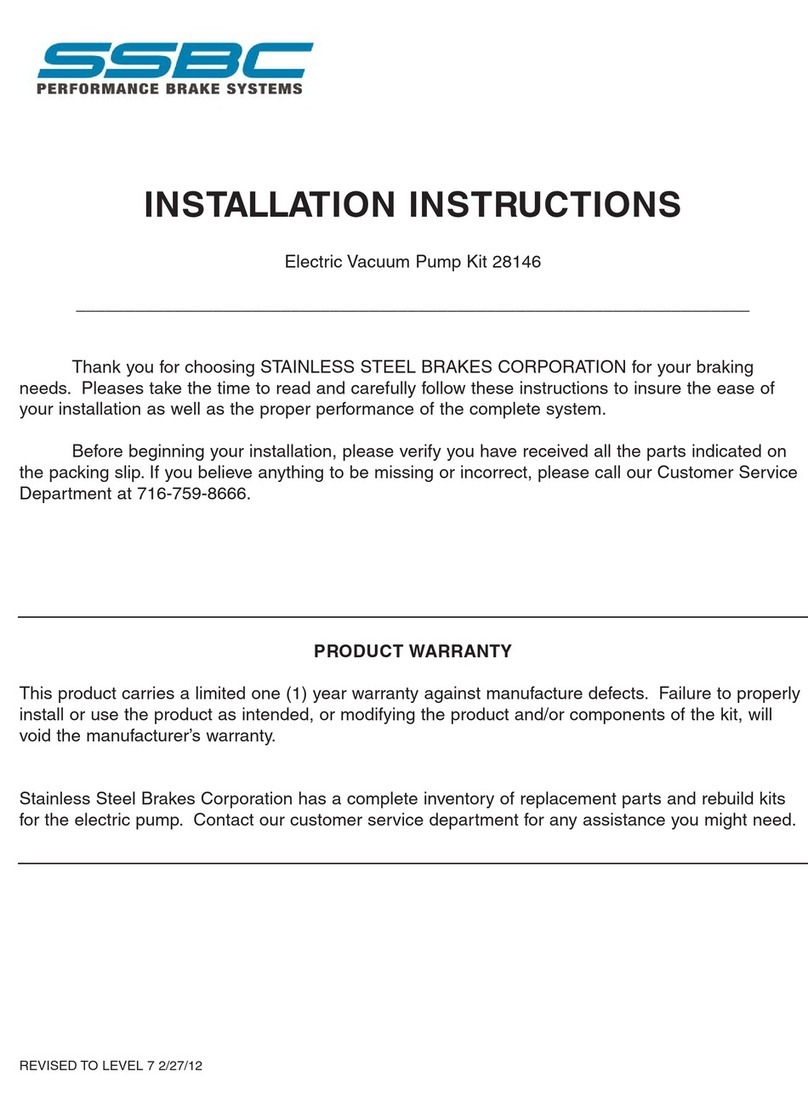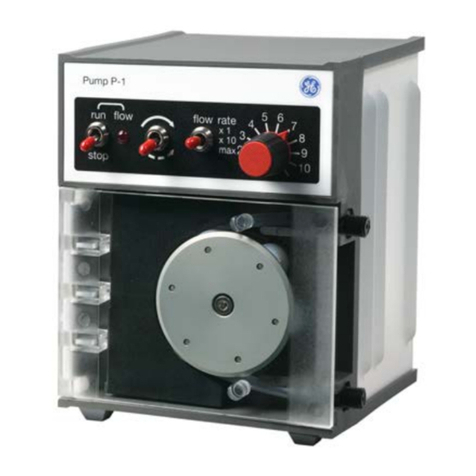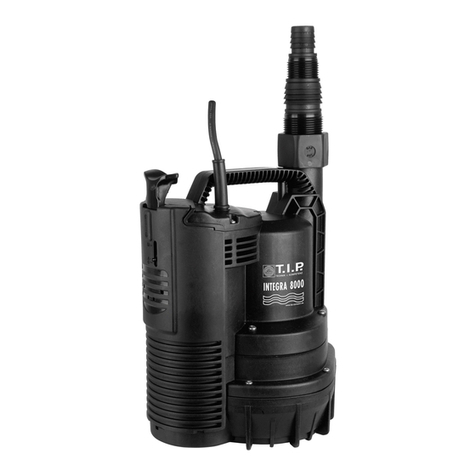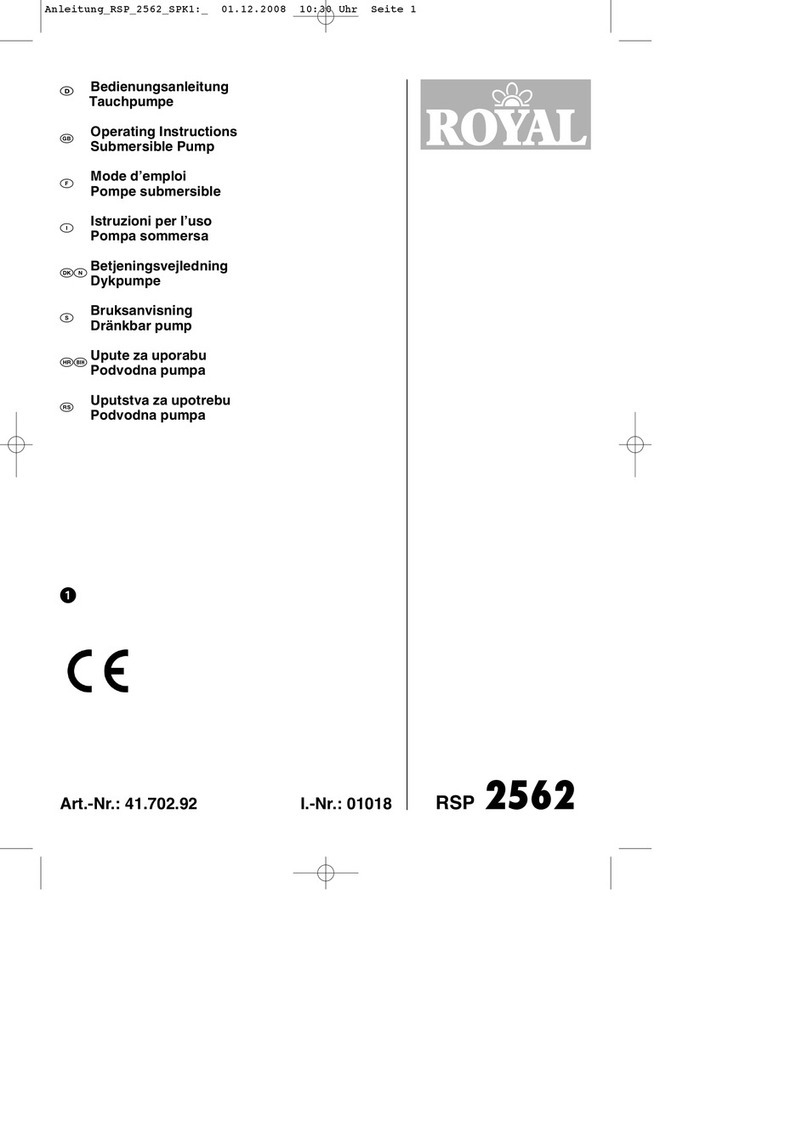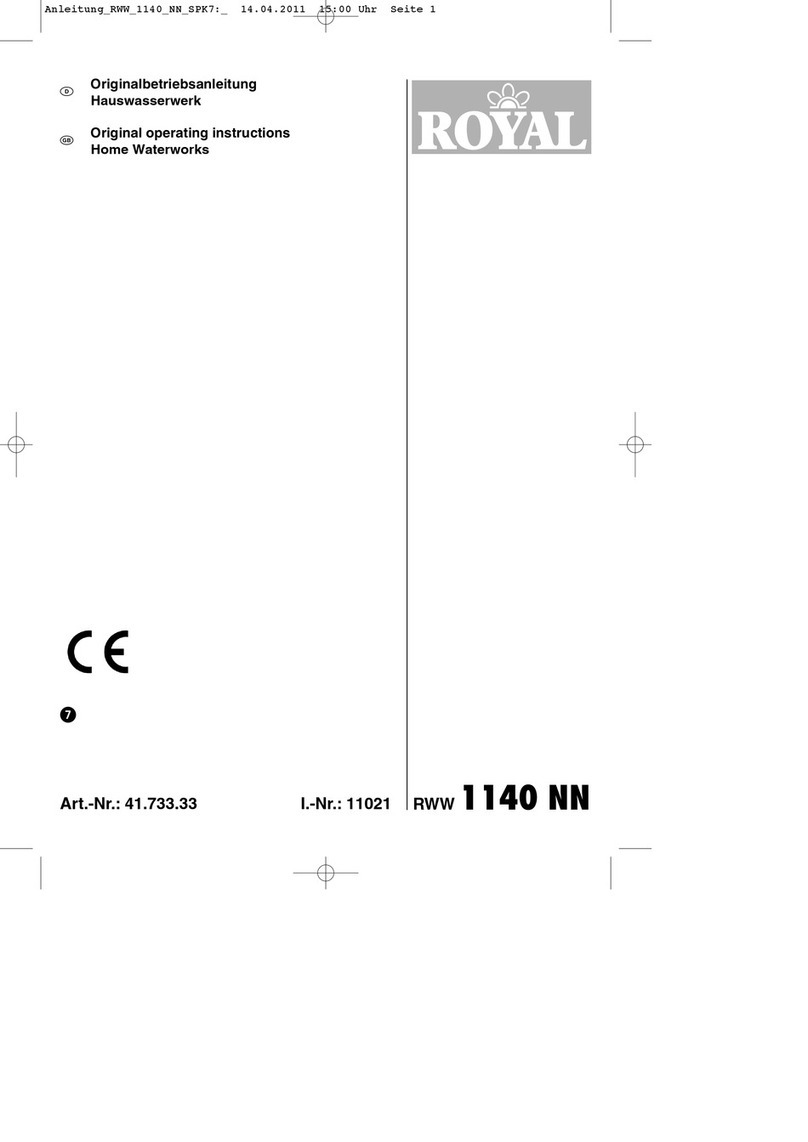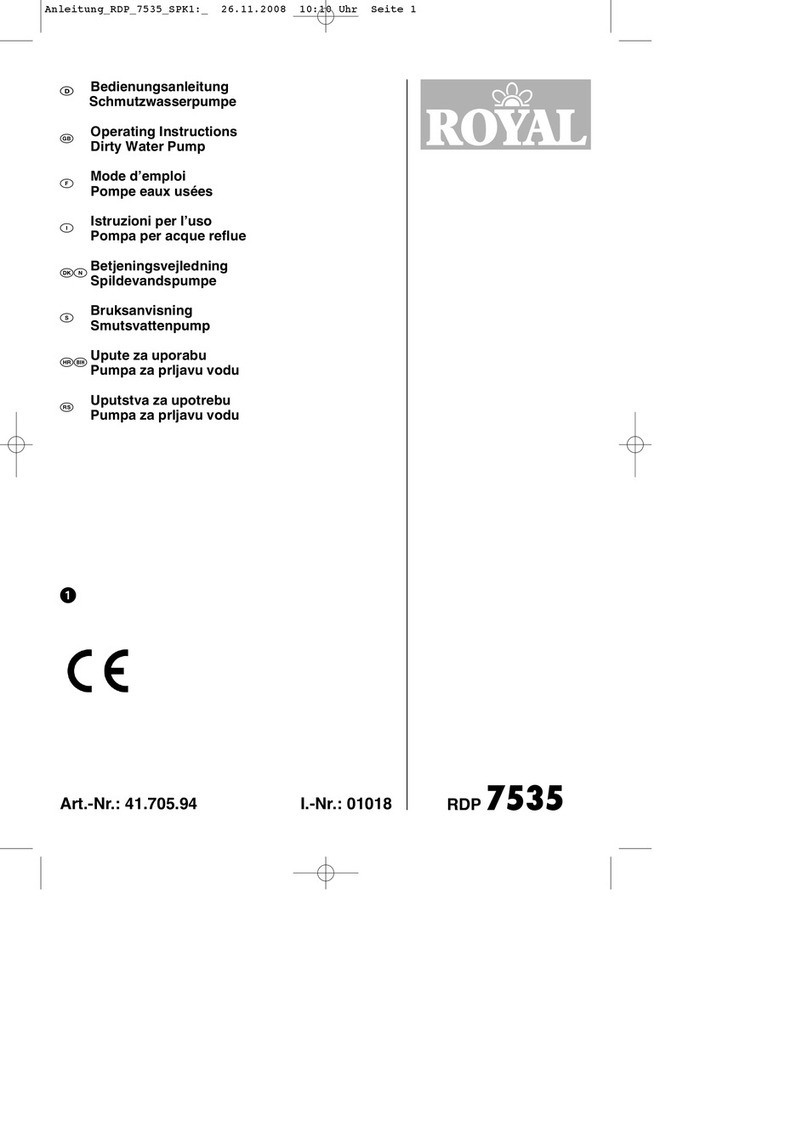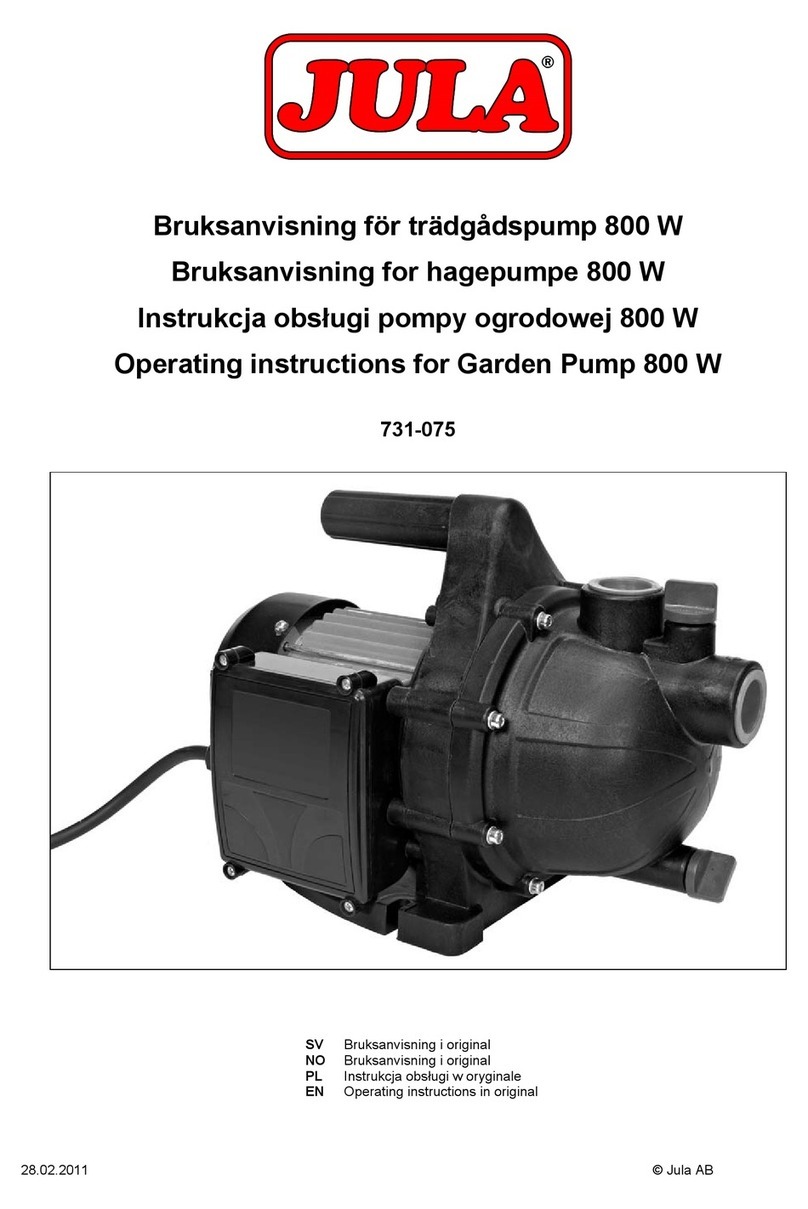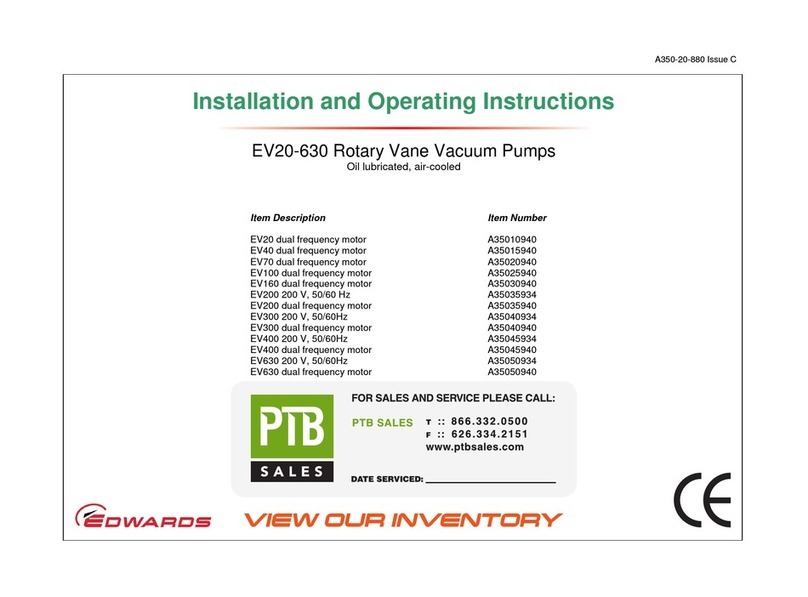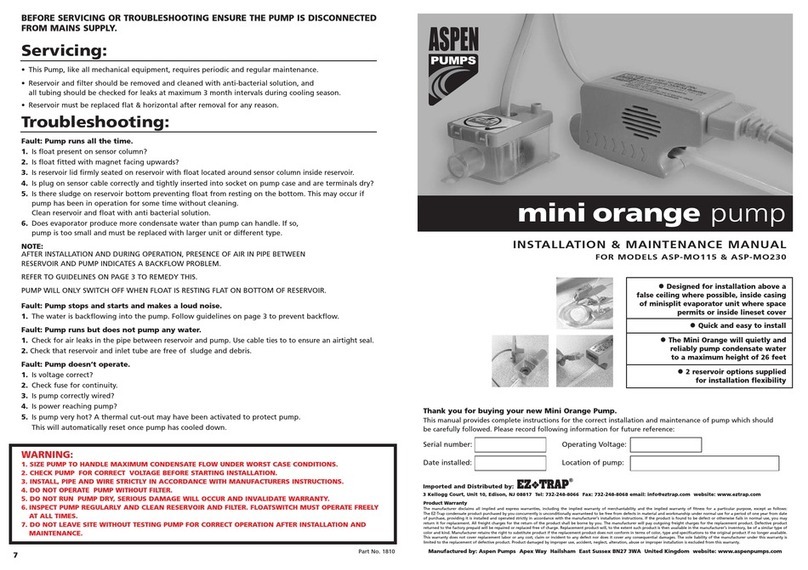5
D
Bei Benutzung des Gerätes in Gewässern mit
natürlichem, schlammigem Boden stellen Sie das
Gerät leicht erhöht auf, z.B. auf Ziegelsteinen.
Für Dauerbenutzung, z.B. als Umwälzpumpe im
Teich, ist das Gerät nicht bestimmt. Die zu
erwartende Lebenszeit des Gerätes wird sich
dadurch deutlich verkürzen, da das Gerät nicht für
eine andauernde Belastung konstruiert wurde.
Das Gerät darf nur nach seiner Bestimmung
verwendet werden. Jede weitere darüber
hinausgehende Verwendung ist nicht
bestimmungsgemäß. Für daraus hervorgerufene
Schäden oder Verletzungen aller Art haftet der
Benutzer/Bediener und nicht der Hersteller.
Bitte beachten Sie, dass unsere Geräte
bestimmungsgemäß nicht für den gewerblichen,
handwerklichen oder industriellen Einsatz konstruiert
wurden. Wir übernehmen keine Gewährleistung,
wenn das Gerät in Gewerbe-, Handwerks- oder
Industriebetrieben sowie bei gleichzusetzenden
Tätigkeiten eingesetzt wird.
4. Technische Daten
Netzanschluss 230V ~50 Hz
Aufnahmeleistung 350 Watt
Fördermenge max. 7.000 l/h
Förderhöhe max. 5 m
Eintauchtiefe max. 5 m
Wassertemperatur max. 35°C
Schlauchanschluss 1 1/2” IG
Fremdkörper max.: Ø 30 mm
Schaltpunkthöhe: EIN max. ca. 50 cm
Schaltpunkthöhe: AUS min. ca. 5 cm
5. Vor Inbetriebnahme
5.1 Die Installation
Die Installation des Gerätes erfolgt entweder:
nStationär mit fester Rohrleitung
oder
nStationär mit flexibler Schlauchleitung
Hinweis:
Die maximale Fördermenge kann nur mit dem
größtmöglichen Leitungsdurchmesser erreicht
werden, beim Anschluss kleinerer Schläuche oder
Leitungen wird die Fördermenge reduziert. Bei
Verwendung des Universal-Schlauchanschlusses
(Abb. 1/Pos. 2) sollte dieser deshalb wie in Abb. 2
gezeigt bis zum genutzten Anschluss gekürzt
werden, um die Fördermenge nicht unnötig zu
reduzieren. Flexible Schlauchleitungen sind mit einer
Schlauchschelle (nicht im Lieferumfang enthalten)
am Universal-Schlauchanschluss zu befestigen.
Zu beachten!
Bei der Installation ist zu beachten, dass das Gerät
niemals freihängend an die Druckleitung oder am
Stromkabel montiert werden darf. Das Gerät muss an
dem dafür vorgesehenen Tragegriff aufgehängt
werden, bzw. auf dem Schachtboden aufliegen. Um
eine einwandfreie Funktion des Gerätes zu
gewährleisten, muss der Schachtboden immer frei
von Schlamm oder sonstigen Verunreinigungen sein.
Bei zu geringem Wasserspiegel kann der im Schacht
befindliche Schlamm schnell eintrocknen und das
Gerät am Anlaufen hindern. Deshalb ist es
notwendig, das Gerät regelmäßig zu prüfen
(Anlaufversuche durchführen).
Hinweis:
Der Pumpenschacht sollte mindestens die
Abmessungen von 40 x 40 x 50 cm haben, damit
sich der Schwimmschalter frei bewegen kann.
5.2 Der Netzanschluss
Das von Ihnen erworbene Gerät ist bereits mit einem
Schutzkontaktstecker versehen. Das Gerät ist
bestimmt für den Anschluss an eine
Schutzkontaktsteckdose mit 230 V ~ 50 Hz.
Vergewissern Sie sich, dass die Steckdose
ausreichend abgesichert ist (mind. 6 A), und
einwandfrei in Ordnung ist. Führen Sie den
Netzstecker in die Steckdose ein und das Gerät ist
somit betriebsbereit.
Achtung!
Diese Arbeit ist nur von einem Fachmann des
Elektrohandwerks oder vom Kundendienst
durchzuführen, um Gefährdungen zu vermeiden.
6. Bedienung
Nachdem Sie diese Installations- und
Betriebsanweisung genau gelesen haben, können
Sie unter Beachtung folgender Punkte das Gerät in
Betrieb nehmen:
nPrüfen Sie, dass das Gerät sicher aufgestellt ist.
nPrüfen Sie, dass die Druckleitung
ordnungsgemäß angebracht wurde.
nVergewissern Sie sich, dass der elektrische




















